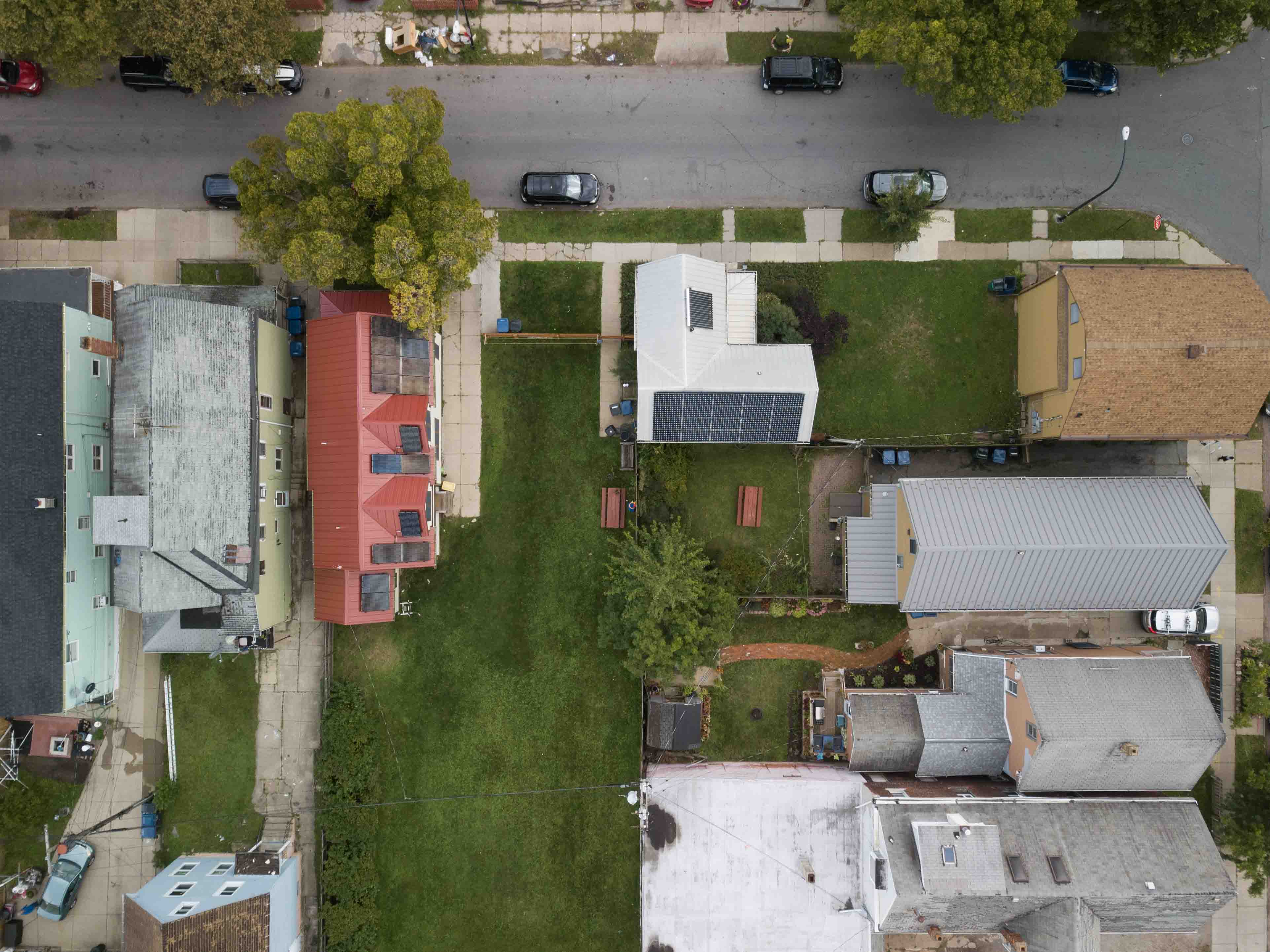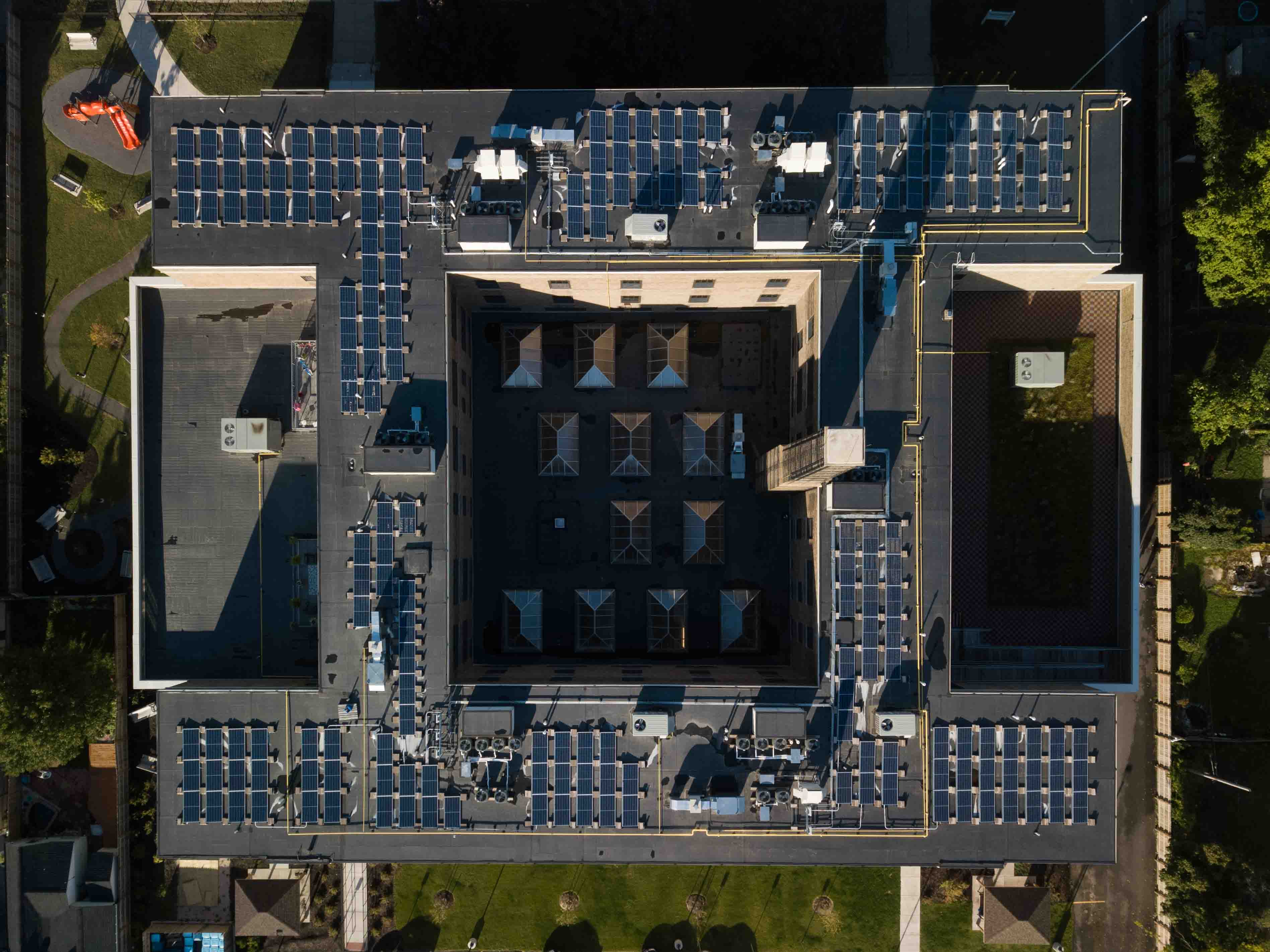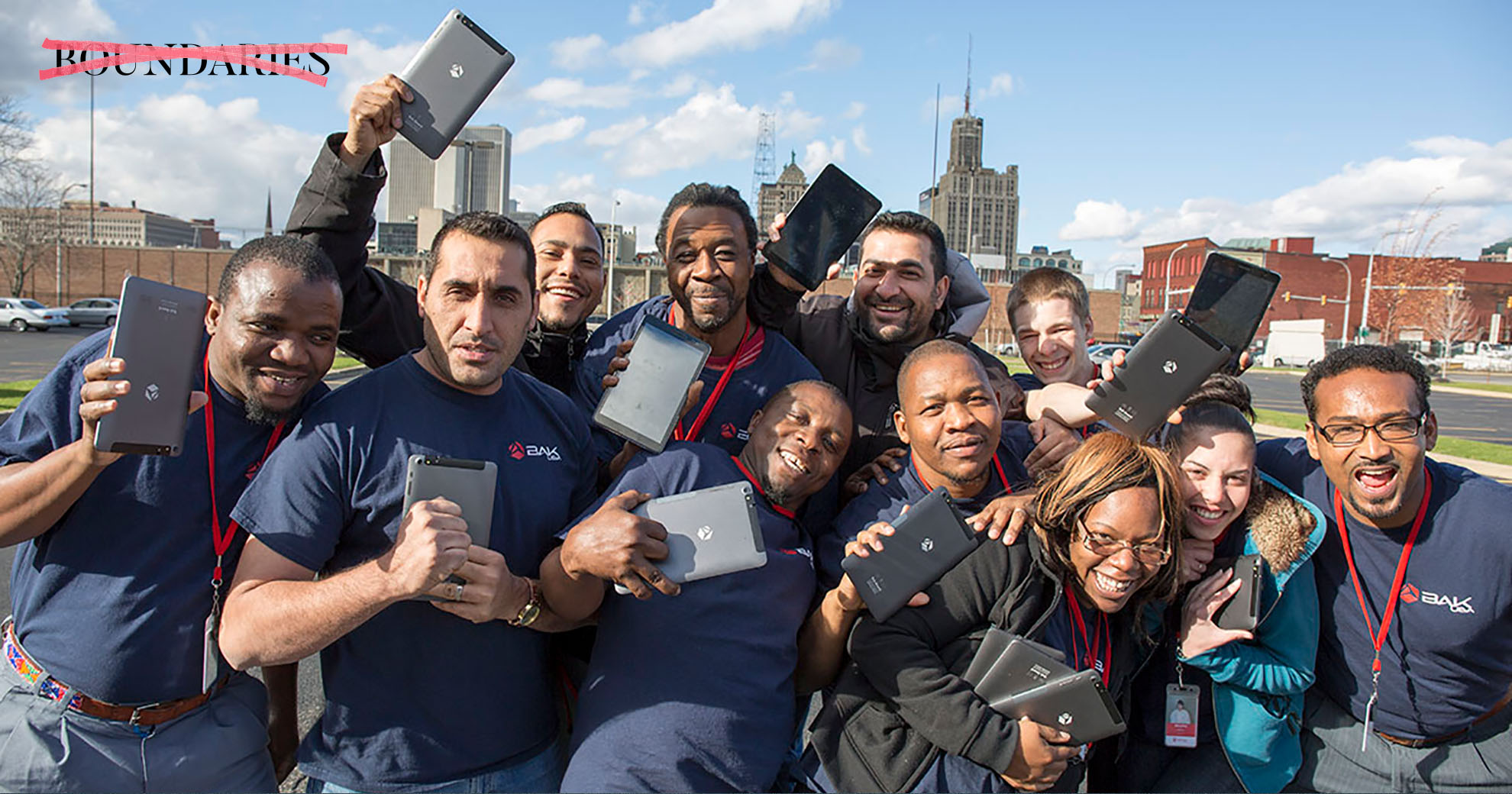Title Image: Jim Cielencki
Harnessing “The Buffalo Renaissance” to Create a Sustainable and Equitable City
Written by Michael Heubusch, Economist
July 2019 was the hottest month on record worldwide, shrinking Arctic and Antarctic sea ice to historic lows. So no, you weren’t the only one wondering if you could still pay your electric bill, since your window AC unit was running 24/7. Global capitalism, and specifically the way energy is produced to fuel capitalist economies, is hurtling us all towards climate catastrophe. Fossil fuel companies have a stranglehold on our energy systems, and their massive collective wealth has given them a disproportionate amount of political power locally and nationally. Behemoths like ExxonMobil engage in propaganda campaigns that push a narrative that fossil fuels can somehow create sustainable energy systems and fight climate change.
(They can’t.)
Events like the Deepwater Horizon oil spill, the recent decimation of the Bahamas, reports of the polar ice caps melting at an alarming rate, and the intentional burning of the Amazon rainforest are making it increasingly clear that the status quo is no longer feasible. Our climate crisis calls for radical change that creates a truly sustainable energy system by wresting power from the fossil fuel industry and putting it in the hands of the people.
We currently have the capacity to stave off the worst consequences of climate change – developments in renewable energy technology, and the ubiquity of the internet, have made it possible to not only achieve sustainable energy systems, but also to create equitable and just communities. However, there are powerful agents in the business and political world that would fight tooth and nail against any meaningful type of climate activism. And while we can be hopeful that national policies such as the Green New Deal will be passed, fighting the immense power of the fossil fuel industry requires diverse and local tactics. Here in Buffalo, we can utilize our city’s explosive development to help usher in a Third Industrial Revolution, in which energy production is conducted horizontally, democratically, and sustainably.
Industrial Revolutions
In order to understand the Third Industrial Revolution (or TIR), we need to discuss the first two, and the enormous impact they had on the global economy. Industrial revolutions occur when communications technology converges with new energy systems. This convergence leads to a massive change in the political economic landscape, and thus society as a whole. These systems eventually give way to new energy paradigms, spurred on by political struggle and technological innovations.
The first industrial revolution (what most people think of as *The* industrial revolution) occurred during the late 1700s and early 1800s, primarily in Britain and then across Europe and the United States. This period was characterized by the advent of coal-fueled steam power and its convergence with print communication. This led to an explosion in textile manufacturing, the birth of the factory and the division of labor, and the emergence of modern capitalism itself. Infrastructure such as rail systems and institutions such as public schooling were implemented as a consequence of the first industrial revolution.
The second industrial revolution, also referred to as the “technological revolution” took place primarily in the United States during the early 20th century. This era was marked by the rise of oil as the primary energy source, the implementation of the electrical grid, and the automobile, which was accompanied by the telephone and radio broadcasting. This period led to the era of mass-production of goods, assembly-line production, and the implementation of the automobile and the interstate highway system. Due to a massive increase in the demand for oil, drilling began at an unprecedented and wholly unsustainable rate. The search for oil led to a complex campaign of warfare and espionage between nations from which we are still living in the fallout.
A “Revolutionary” Revolution
Both the first and the second industrial revolutions were marked by hierarchical, environmentally corrosive energy systems. The TIR is truly “revolutionary” in that it would, for the first time since the beginning of capitalism, place our energy systems, and thus our economic well-being, under decentralized, democratic control.
So, what is the Third Industrial Revolution?
A theory developed and implemented in multiple countries already by America economist Jeremy Rifkin, the TIR would combine the communications technology made possible by the Internet with green energy production to radically change our society.
The TIR has 5 pillars:
- Shifting to renewable energy
- Transforming the building stock of every continent into mini-power plants to collect renewables onsite
- Deploying hydrogen and other battery storage technologies in every building and throughout the infrastructure to store energy
- Using internet tech to transform the power grid of every continent into an energy-sharing intergrid
- Transitioning the transportation fleet to electric plug-in vehicles and fuel cell vehicles that can buy and sell electricity

We need to shift to renewable energy if we intend to survive as a species. It doesn’t matter how many electric cars we produce, or how much vegan food we eat – as long as the electrical grid is run on fossil fuels, we will not make the changes necessary as a society to avoid the worst outcomes of climate change.
Rifkin proposes that every building, whether it be a home, place of business, or government building, become a source of green energy production, using a combination of solar, wind, hydro, and geothermal energy sources. Using hydrogen cells, new battery tech, electric cars plugged into the grid, and other traditional and non traditional means of energy storage, it is technologically feasible to collect and distribute green energy across communities without the need for a central utility’s facilitation. The internet would make the automatic sharing of energy possible between autonomous individual owners of energy production, transferring power from excess producers to those with higher demand.
The result is not just immediate savings on the electric bill or additional income from trading (not to mention a guilt-free conscious about one’s impact on the earth). The economic and political power is also removed from the energy companies pushing to maintain the status quo, allowing the Third Industrial Revolution to take flight.
Similarly, we can use green technology to transform travel and shipment of goods. Using the green energy produced in large part by the aforementioned “mini-power plants”, we can mass-produce electric and sustainable cars, buses, trains and even planes. We can create mass green public transit systems, both within cities and across the country, making travel both accessible and sustainable for the first time. Anyone who commutes by bus or rail in Buffalo knows that some revolutionary investment into public transit would make life a lot easier.
If implemented, the TIR would not only spur the positive democratic and environmental outcomes outlined above, it would also serve as a huge economic stimulus for any community that pursues it; thousands of jobs locally and millions of jobs nationally would be created to retrofit homes, large buildings and transportation systems, constructing the infrastructure necessary to succeed. These jobs would have relatively low barriers to entry, and could employ a wide range of people, including a ready stock of fossil fuel industry workers, leading to increased economic activity and decreased poverty and precarity.
Pursuing the TIR may seem like an astronomical task – that’s because it is. But the technology is already here. It’s just about getting to work, together. It’s not enough to have the right ideas and plans; in order to avert climate disaster, we need to fight against the powerful fossil fuel industry and their countervailing narrative that claims a mere tweaking of the current system is enough to fight climate change.
How We Get There
The TIR experiment has already begun in places that bear a strong resemblance to Buffalo. The regions of Utrecht, Netherlands and the Hauts-de-France are currently in the process of financing and implementing programs to make their cities economically viable, and democratic in their sustainable energy production.
Utrecht, which boasts more than 1,000 years of religious and cultural significance, is one of the fastest-growing cities in the European Union. Like Buffalo, Utrecht has a population of around 300,000, and the city is currently going through a period of urban development. In the late 2010s, Utrecht set an incredibly ambitious goal: to become fully carbon neutral by 2040. In order to do so, they are exploring using the economic boom in their city to finance new green development. One aspect of this plan is to use revenue generated from the property taxes in newly developed areas to finance new projects in more marginalized areas of the city, while new building construction must be carbon-neutral by city mandate. Utrecht’s blueprint is a model of how Buffalo can finance a transition to sustainable energy and make our city more equitable at the same time. Lower energy costs create a feedback loop of business development and attraction to workers to move there.
The Hauts-de-France industrial region of cities and towns can be seen as a bonafide “rust belt” in the north of France. It has a history of heavy steel and textile manufacturing. However, many of the region’s major industries disappeared during the late 20th century as the economy shifted away from domestic manufacturing and towards a service-oriented job market. Sound familiar?
In 2013, Hauts-de-France adopted a TIR “Master Plan” to implement the goals outlined above. Specifically, the region is focusing on energy efficiency in buildings, switch from individual and energy intensive transportation modes to collective and low carbon ones. The Chamber of Commerce and Industry (CCI) of Hauts-de-France has committed to using renewable energy, making innovations in shared technology for collective transportation, and local recharging stations for electric vehicles. New buildings erected by developers working with the CCI create more energy than they use. New recycling industries have arrived turning waste like discarded clothing, a current scourge on the global environment, into household insulation and more.
Building a Sustainable and Equitable Buffalo
Buffalo’s renaissance is characterized by urban development – Elmwood Village cites new high-rises, our waterfront is being rebuilt, the Medical Campus is growing exponentially, and the West Side is seeing new small businesses find success. In our city, this has unfortunately come with of gentrification, construction of new buildings with loose carbon limit suggestions, and the economic gains have gone primarily to a small minority of developers and business owners. But it does not have to be this way.
We can harness the economic gain made by this development by taxing the wealth attained by development companies, rather than subsidizing it with tax breaks funded by the city’s residents, as well as through other means, to fund a transition towards a Third Industrial Revolution in Buffalo. We can give power to the people – literally – by developing a decentralized green energy grid in our city, and be a model to cities across the country.
So, What can you do to make Buffalo an innovative leader again for the first time in over 100 years?
- If you own a home, look into how you can use your property to create its own green energy. Beyond just installing solar panels, can you better insulate your walls? Can you electrify your home’s heating and appliances? Your pipes are underutilized turbines, your home’s corners can capture wind energy. You’ll save a lot of money and also take power away from the central electric and gas utilities.
- If you rent, like most of us do, reach out to your fellow tenants and collectively demand that your landlord pursue energy-producing or energy-efficient building solutions and that they use the savings generated to reduce your rent. Multiple landlord/tenant agreements have developed in Europe where transition costs are split initially and savings are passed back to tenants over time.
- Pressure local legislators to pursue transformational green energy programs, using tax revenue generated by property development and other forms of wealth to finance them. Our politicians owe us more than small ideas.
Your vote matters quite a bit, and so does your wallet. We can embrace a diversity of tactics in the fight against the fossil fuel industry and a pending climate catastrophe and work both locally and nationally to shift power away from those who would fight against a transition to a sustainable society. No benign CEO or politician is going to save us from climate catastrophe – we have to work together to plan, fund, and fight for a just, sustainable and livable future.
Michael Heubusch is a community organizer and economist who works as a cooperative developer and educator at Cooperation Buffalo.






